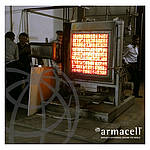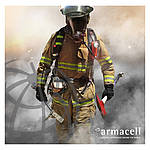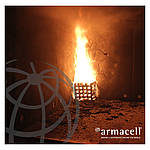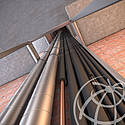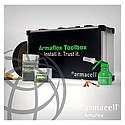EFFECTIVE ENERGY EFFICIENCY HVAC INSULATION
Installing thermal insulation materials for comfort and safety indoors
Benefits of thermal insulation materials on HVAC systems
Heating, ventilation and air-conditioning (HVAC) systems play a central role in supporting the comfort and safety of indoor environments. It pushes air through ducts that run through walls, ceilings and floors to circulate air while the chilled water pipe systems help to moderate the temperature conditions. Installing thermal insulation materials on ducting and piping systems of HVAC applications is necessary for optimal energy efficiency. At the same time, the insulation material can either help to defend against or contribute to indoor air-quality problems.
The thermal insulation of a ductwork system, for example, must resist moisture and the air remains mould-, dust- and fiber-free. The wrong product could absorb moisture and support growth of mould and mildew, or release fibres or off-gas volatile organic compounds (VOCs) into the indoor air, which reduces the quality of the indoor environment.
Insulation materials limits HVAC noise
Noise could also be generated due to the vibration produced by mechanical equipment or the air and fluid movement through ducts and pipes. One of the best ways of reducing noise is to limit the vibration produced by installing insulation materials that can help to isolate or dampen.
- Isolation is the prevention of vibration from entering the system and dissipating it by changing kinetic energy of vibration into a different form of energy, such as heat.
- Damping dissipates mechanical energy from the system and attenuates vibrations more quickly. Without damping, these systems may vibrate for some time before coming to rest.
Suggested insulation solutions for HVAC
Discover more about Armacell's solutions for the HVAC industry in the product section. ArmaFlex is well-known for its long-term reliable performance, helping to enable energy savings and are compliant with various fire protection regulations. The acoustic insulation porfolio includes open-cell foam insulation ArmaPhonic as well as a variety of professional barriers that are excellent at reducing the transmission of airborne sound and in enhancing the insertion loss performance.
Safety standards
We spend a significant amount on testing every year to supply customers with high-quality products ideal for their destination markets. Discover how using Armacell's compliant products provides you with a greater ease of mind. Click here or one of the images below.
Part 6 specifies a method of test for providing a comparative measure of a flat material or assembly's contribution to the growth of a fire taking into account the combined effect of several factors. Read more.
The FM approval or the FM 4924 standard is an approval requirement for insulation material used on the exterior of non-combustible pipes or ducts. This standard uses a full-scale pipe chase test for tube insulation and a full-scale room test for duct insulation (sheets). Read more.
